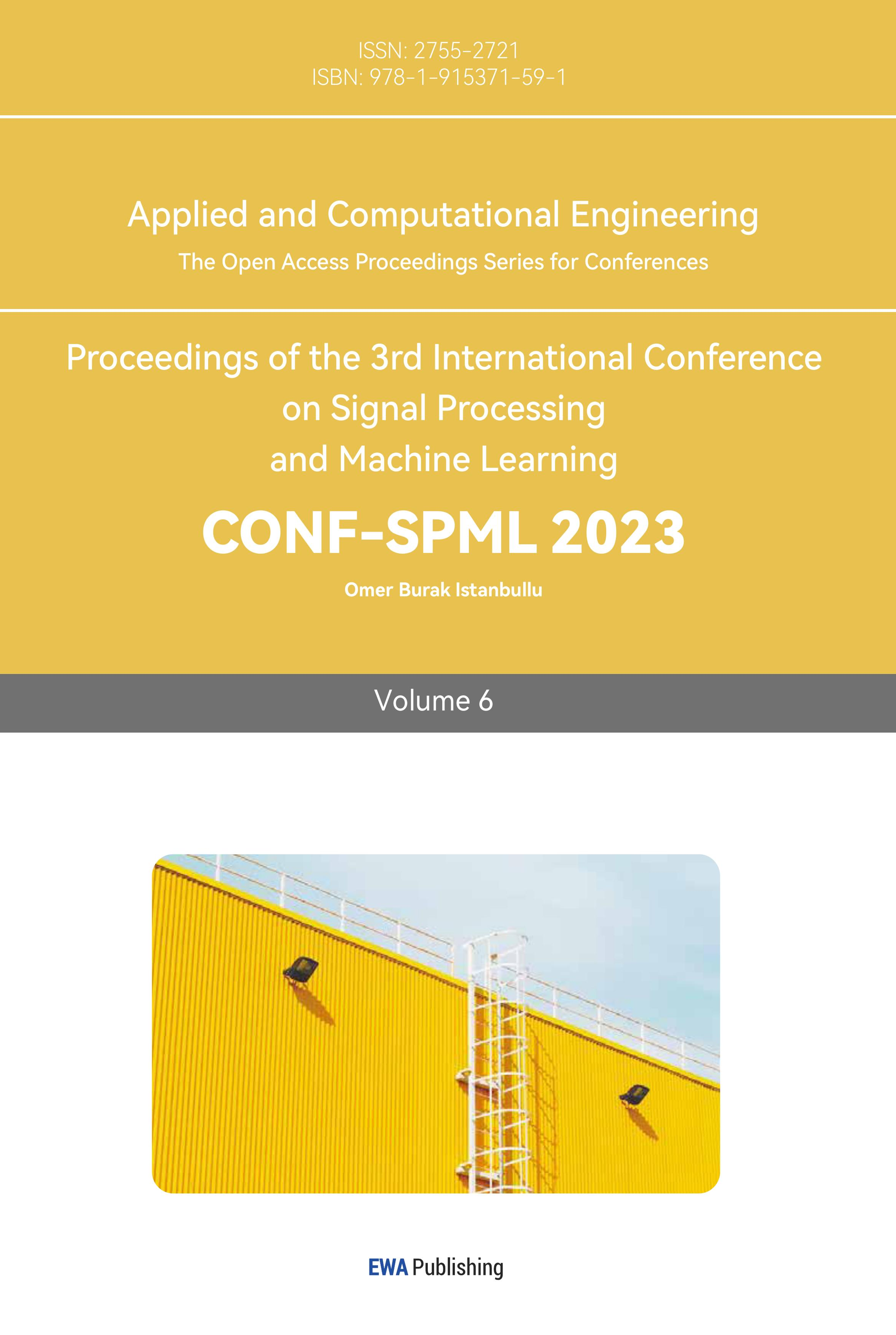1. Introduction
People can exchange and transmit information beyond the limits of space and time. The branches of communication that are developing quite fast are wireless mobile communication and the Internet. Wireless mobile communication technology has evolved from analog modulation to digital modulation techniques. Around 1990, FDMA and analog modulation for voice transmission were still dominant. The main drawbacks of such systems were low spectrum utilization and signal interference to voice services. However, since 1990, digital voice transmission has changed a lot. Second-generation cellular systems use digital modulations like TDMA (Time Division Multiple Access) or CDMA (Code Division Multiple Access) to increase the capacity and use separate signaling channels, significantly improving system performance. As society develops and the number of users grows, the frequency of resources becomes more and more limited. This means that third-generation mobile communication systems need to have more system capacity and better communication quality, meet multimedia communication needs, and adapt to how personalized communication is growing.
TD-SCDMA is the third generation mobile communication system standard. It has the advantages of high spectrum utilization, large system capacity and low system cost.
The greatest amount of focus has been placed on the orthogonal frequency division multiplexing technology that was introduced in the fourth generation of mobile communication system technology (OFDM). Fourth-generation mobile communication is not just about increasing the number of users; it also needs to adapt to the needs of multimedia transmission, which, of course, includes the quality of communication. In general, the future mobile communication system must accommodate the vast number of subscribers in the market, improve the poor quality of communication, and meet the requirements of high-speed data transmission.
Even though OFDM is a significant improvement over previous communication methods, interference problems will always happen. Therefore, many techniques will be used to enhance the interference immunity of OFDM. The most common one is CP-OFDM.
This paper is organized as follows. In Section 2, the block diagram will be used to show the system model of the whole OFDM and the model of the OFDM system with protection spacing. In Section 3, a simulated OFDM system will be built using MATLAB, and simulations of the spectrograms and BER curves before and after adding the protection interval will be compared. In Section 4, the concluding remarks are given.
2. OFDM system and OFDM-CP system
2.1. Orthogonal frequency division multiplexing (OFDM)
Since the sub-carriers in orthogonal frequency division multiplexing (OFDM) are orthogonal to one other, the modulated spread spectrum can overlap, which not only reduces the amount of interference between sub-carriers but also considerably enhances the efficiency of spectrum usage. Each of the N sub-carriers can be modulated and broadcast separately using the MCM method if the data stream is split into N lower-rate sub-streams. This is due to the fact that the sub-stream rate is 1/N, which results in a symbol period that is N times bigger than the maximum delay extension of the channel. Using OFDM, the selected sub-carriers are overlapping in frequency but orthogonal in time. From the perspective of the recipient, however, they can still be considered distinct. The modulation and demodulation steps utilized by an OFDM system are depicted in the block diagram below.
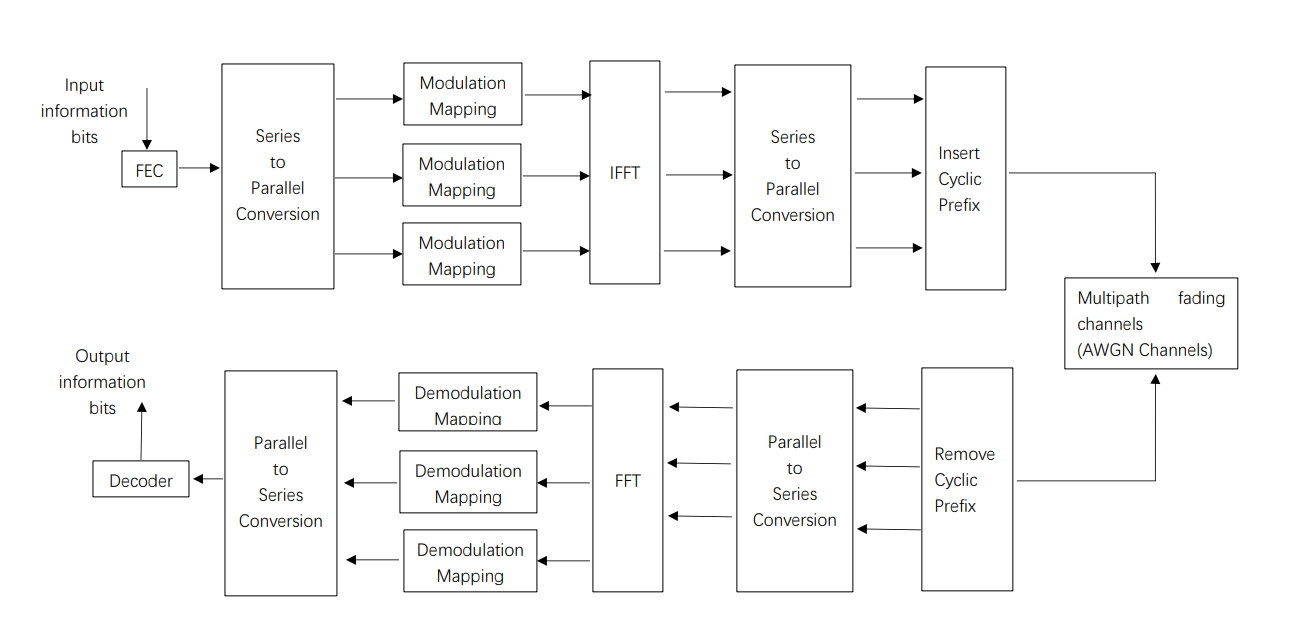
Figure 1. Block Diagram of OFDM system modulation and demodulation. (Photo credit: Original).
OFDM modulation is the modulation of data symbols obtained by mapping data bits through constellations onto a number of mutually orthogonal subcarriers. OFDM demodulation is to acquire the data symbols carried on the subcarriers and then change the symbols to serial.
If \( N \) is the number of subchannels, \( T \) denotes the width of symbol, \( {d_{k}} \) is the data symbol that is assigned to each subchannel, here the value of k is from 0 to N-1, and \( {f_{c}} \) is the carrier frequency of the 0th subcarrier, then an OFDM system will have \( N \) subchannels, \( T \) subcarriers, and \( N-1 \) data symbols, and \( rect(t) \) is a rectangular function with \( rect(t)=1, |t|≤\frac{T}{2} \) , after that, the OFDM symbols, beginning with \( t={t_{s}} \) can be expressed as:
\( s(t)=\lbrace Re\lbrace \sum _{k=0}^{N-1}{d_{k}}rect(t-{t_{s}}-\frac{T}{2})exp{[j2π({f_{c}}+\frac{k}{T})(t-{t_{s}})]}\rbrace \rbrace \) \( For {t_{s}}≤t≤{t_{s}}+T \)
\( s(t)=0 \) \( Otherwise \) (2.1)
The signal produced by OFDM is typically described in terms of its complex equivalent baseband signal, which is:
\( s(t)=\lbrace \sum _{k=0}^{N-1}{d_{k}}rect(t-{t_{s}}-\frac{T}{2})exp[j2π({f_{c}}+\frac{k}{T})(t-{t_{s}})]\rbrace \) \( For {t_{s}}≤t≤{t_{s}}+T \)
\( s(t)=0 \) \( Otherwise \) (2.2)
In place of the in-phase and orthogonal OFDM symbol components, the real and imaginary parts can be multiplied by the cosine and sine of the corresponding subcarriers to provide the final subchannel signal and the synthesized OFDM signal, respectively.
Above figure 1 is a diagram of an OFDM system model, which shows how N serial complex sequences are converted to parallel at the transmitter and then modulated with N subcarriers in order to perform frequency division multiplexing. N coherent demodulators are needed at the receiving end. Due to the orthogonality of the subcarriers, the coherent demodulator can effectively separate the data modulated in each subcarrier, allowing for the recovery of the same complex sequence that was present in the transmitter.
OFDM modulation and demodulation, as well as cyclic prefix addition and removal, constellation mapping, data and analog-to-digital conversion, transmit and receive filtering, up conversion and down conversion, codec and interleaving, etc. are all components of the actual OFDM system transceiver architecture. The binary input data is first forward error-corrected, and then interleaved with bits, so as to counteract the effects of random noise (coded data) and burst noise (interleaved coded data). An OFDM symbol is the N sample point values acquired following IFFT processing. After pulse shaping, IQ modulation, and up conversion, the signal is input to the front-end amplifier before being transmitted out through the transmitter. Inter-symbol interference (ISI), which is brought on by multipath fading, can be mitigated through the implementation of this strategy.
After RF signal has been down converted and IQ sampled to obtain discrete sample points, timing processing is used to determine where the OFDM symbols begin, the cyclic prefix portion is removed, the remaining OFDM signal is exchanged using an N-point FFT, and finally, parallel-serial conversion is used to evaluate the demodulation of PSK or QAM. After demodulation, the data is interleaved and decoded using forward error correction to go back to the original data received by the source, which requires estimation of the channel parameters if coherent demodulation is utilized.
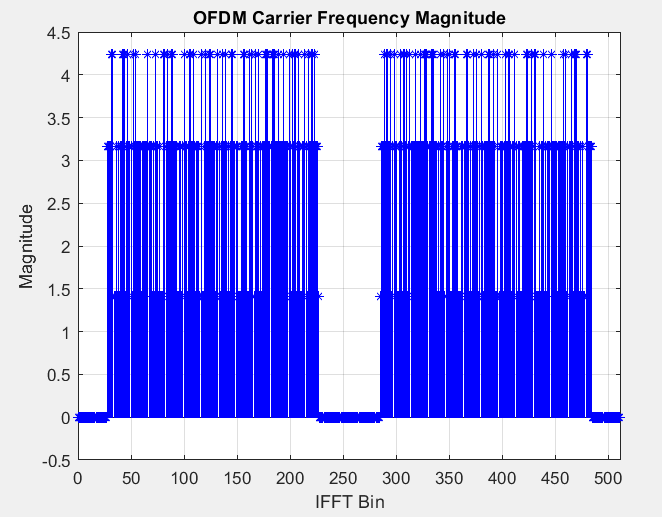
Figure 2. OFDM Carrier Frequency Magnitude. (Photo credit: Original)
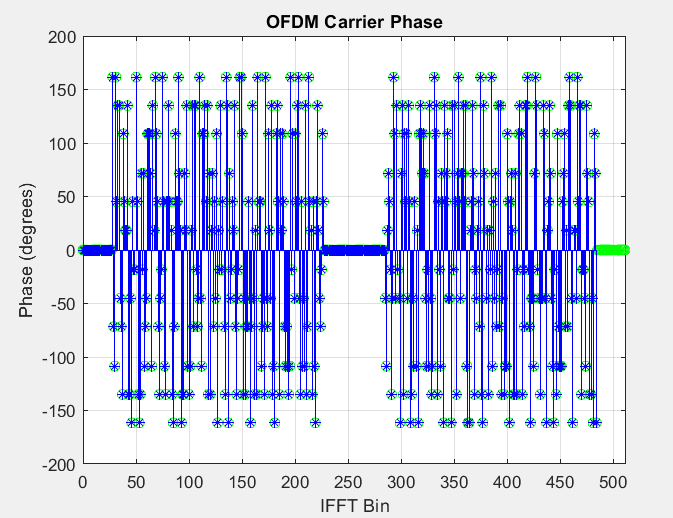
Figure 3. OFDM Carrier Phase. (Photo credit: Original)
2.2. Cyclic prefix orthogonal frequency division multiplexing
In 1980, Peled and Ruiz proposed using a cyclic prefix (CP) to preserve OFDM symbols; this means that the final portion of an OFDM symbol would be replicated before the symbol itself. The primary benefit of cyclic prefixes is that they immediately generate the cyclic convolution of OFDM symbols and channel response without the composition of cyclic reconstruction by directly superimposing the time delay extension of CP in the protection interval on the data block. Coarse time synchronization, however, is a fundamental approach of CP-OFDM that can be leveraged from the cyclic structure of CP-OFDM.

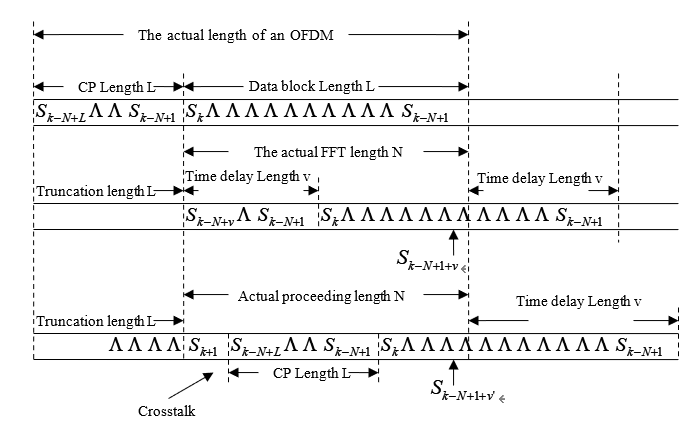
Figure 4. Block Diagram for OFDM system with CP. (Photo credit: Original)
When CP-OFDM is being utilized, the timing position of the FFT receive window needs to be after the multipath time delay expansion of the channel in the protection interval. This is done to ensure that the signal that is being translated to the frequency domain is a cyclic convolution of the data that is being transmitted and the channel. The timing position To satisfy:
\( {τ_{max}}≤{T_{o}}≤{T_{G1}} \) (2.3)
where τ_max is the maximum multipath delay expansion; T_G1 is the length of the protection interval. Based on the literature this research referenced, they indicated that in the model of the PSD they studied, there are limitations in the performance of the OFDM system with the coexistence of existing CP-OFDM systems.
3. Comparison with OFDM system and OFDM with Cyclic Prefix system
3.1. Signal spectrum
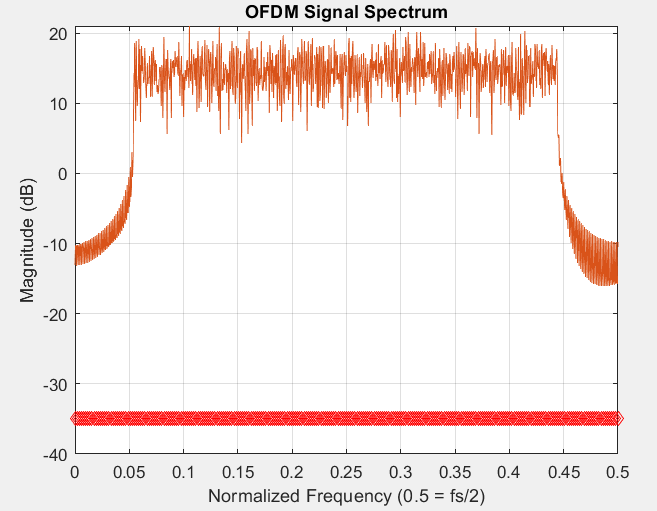
Figure 5. OFDM signal spectrum. (Photo credit: Original)
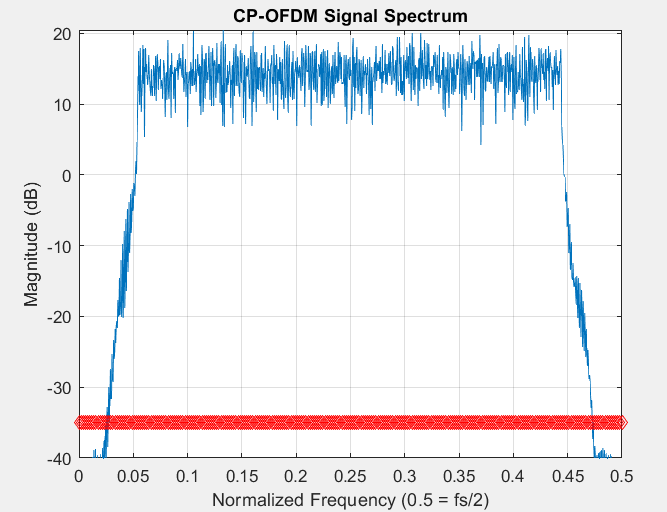
Figure 6. OFDM-CP signal spectrum. (Photo credit: Original)
From the figures, the PSD of the OFDM system without CP is -10dB in figure 5. Figure 6 shows that the OFDM system with CP has a PSD of less than -40dB.
3.2. Bite error rate
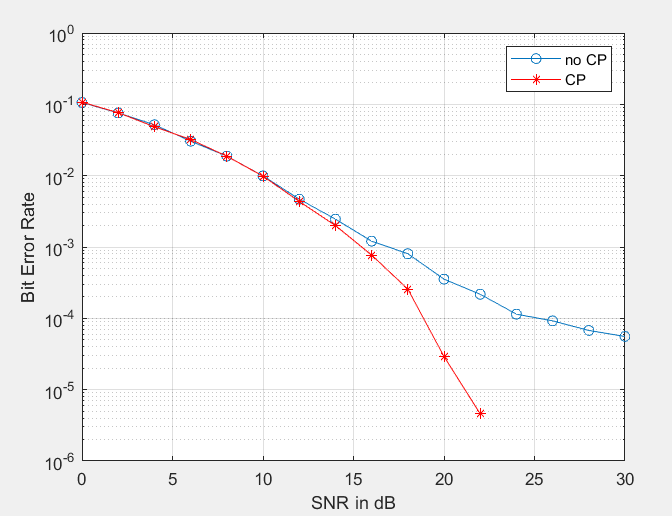
Figure 7. CP impact curve on BER under multipath fading channel. (Photo credit: Original)
Bit error rate of \( {10^{-5}} \) and OFDM signal-to-noise ratio of 30 dB are depicted in the figure for ODFM modulation with OFDM multiplexing. The OFDM-CP system has a signal-to-noise ratio of 23 dB and a bit error rate of \( {10^{-5}} \) . The BER curves of the system with and for adding CP under multipath fading channel are given in Figure 7, which shows that adding CP can effectively improve the system against multipath fading interference. When the SNR is low, adding CP has a minimal impact on the performance of the system. This is most likely due to the fact that the interference caused by the system is predominately caused by Gaussian white noise when the SNR is low. However, when the SNR is increased, the interference caused by the system changes to multipath fading interference, and adding CP then clearly improves the performance of the system.
4. Conclusion
This paper looks at how the OFDM and OFDM systems with cyclic prefixes differ. By comparing the signal spectrum and the variation curve of bit error rate with the signal noise ratio, systems with cyclic prefixes for orthogonal frequency division multiplexing have better noise immunity. It can be concluded that the OFDM-CP system provides strong performance and suitable bandwidth for the wireless communication system and is effective.
References
[1]. Ayadi R, Kammoun I and Siala M 2020 Bridging the Gap Between CP-OFDM and ZP-OFDM for the Provision of Ultra-Low Latency Services in 5G vol 14 (IEEE Systems Journal) pp 603-613
[2]. Bodinier Q, Bader F and Palicot J 2016 Modeling interference between OFDM/OQAM and CP-OFDM: Limitations of the PSD-based model (2016 23rd International Conference on Telecommunications (ICT)) pp 1-7
[3]. Lorca J 2015 Cyclic Prefix Overead Reduction for Low-Latency Wireless Communications in OFDM (2015 IEEE 81st Vehicular Technology Conference (VTC Spring)) pp 1-5
[4]. ong F T 2008 Research on the role and application of cyclic prefixes in OFDM systems (University of Lanzhou)
[5]. Huang J, Ruan F, Su M, Yang X, Yao S and Zhang J 2016 Analysis of Orthogonal Frequency Division Multiplexing (OFDM) Technology in Wireless Communication Process (2016 10th IEEE International Conference on Anti-counterfeiting, Security, and Identification (ASID))
[6]. Mahmud M H, Hossain M M, Khan A A, Ahmed S, Mahmud M A and Islam M H 2020 Performance Analysis of OFDM, W-OFDM, and F-OFDM Under Rayleigh Fading Channel for 5G Wireless Communication (2020 3rd International Conference on Intelligent SustainableSystems (ICISS)) pp 1172-1177
[7]. Wang N and Blostein S D 2004 Adaptive Zero-Padding OFDM over Frequency-Selective Multipath Channels (EURASIP Journal on Applied Signal Process) pp 1478-1488
[8]. Muquet B, Wang Z, Giannakis G B, Gourville M and Duhamel P 2002 Cyclic prefixing or zero padding for wireless multicarrier transmissions vol 50 (IEEE Trans Communications) pp 2136-2148
[9]. Toeltsch M and Molisch A F 2000 Efficient OFDM Transmission without Cyclic Prefix over Frequency-Selective Channels vol 2 (11th IEEE International Symposium on Personal Indoor and Mobile Radio Communications) pp 1363-1367
[10]. Zhou L J 2009 Study of ICI self-cancellation algorithm in OFDM wireless communication system (Nankai University) pp 30-32
Cite this article
Yang,J. (2023). Orthogonal frequency division multiplexing technology based on MATLAB. Applied and Computational Engineering,6,246-253.
Data availability
The datasets used and/or analyzed during the current study will be available from the authors upon reasonable request.
Disclaimer/Publisher's Note
The statements, opinions and data contained in all publications are solely those of the individual author(s) and contributor(s) and not of EWA Publishing and/or the editor(s). EWA Publishing and/or the editor(s) disclaim responsibility for any injury to people or property resulting from any ideas, methods, instructions or products referred to in the content.
About volume
Volume title: Proceedings of the 3rd International Conference on Signal Processing and Machine Learning
© 2024 by the author(s). Licensee EWA Publishing, Oxford, UK. This article is an open access article distributed under the terms and
conditions of the Creative Commons Attribution (CC BY) license. Authors who
publish this series agree to the following terms:
1. Authors retain copyright and grant the series right of first publication with the work simultaneously licensed under a Creative Commons
Attribution License that allows others to share the work with an acknowledgment of the work's authorship and initial publication in this
series.
2. Authors are able to enter into separate, additional contractual arrangements for the non-exclusive distribution of the series's published
version of the work (e.g., post it to an institutional repository or publish it in a book), with an acknowledgment of its initial
publication in this series.
3. Authors are permitted and encouraged to post their work online (e.g., in institutional repositories or on their website) prior to and
during the submission process, as it can lead to productive exchanges, as well as earlier and greater citation of published work (See
Open access policy for details).
References
[1]. Ayadi R, Kammoun I and Siala M 2020 Bridging the Gap Between CP-OFDM and ZP-OFDM for the Provision of Ultra-Low Latency Services in 5G vol 14 (IEEE Systems Journal) pp 603-613
[2]. Bodinier Q, Bader F and Palicot J 2016 Modeling interference between OFDM/OQAM and CP-OFDM: Limitations of the PSD-based model (2016 23rd International Conference on Telecommunications (ICT)) pp 1-7
[3]. Lorca J 2015 Cyclic Prefix Overead Reduction for Low-Latency Wireless Communications in OFDM (2015 IEEE 81st Vehicular Technology Conference (VTC Spring)) pp 1-5
[4]. ong F T 2008 Research on the role and application of cyclic prefixes in OFDM systems (University of Lanzhou)
[5]. Huang J, Ruan F, Su M, Yang X, Yao S and Zhang J 2016 Analysis of Orthogonal Frequency Division Multiplexing (OFDM) Technology in Wireless Communication Process (2016 10th IEEE International Conference on Anti-counterfeiting, Security, and Identification (ASID))
[6]. Mahmud M H, Hossain M M, Khan A A, Ahmed S, Mahmud M A and Islam M H 2020 Performance Analysis of OFDM, W-OFDM, and F-OFDM Under Rayleigh Fading Channel for 5G Wireless Communication (2020 3rd International Conference on Intelligent SustainableSystems (ICISS)) pp 1172-1177
[7]. Wang N and Blostein S D 2004 Adaptive Zero-Padding OFDM over Frequency-Selective Multipath Channels (EURASIP Journal on Applied Signal Process) pp 1478-1488
[8]. Muquet B, Wang Z, Giannakis G B, Gourville M and Duhamel P 2002 Cyclic prefixing or zero padding for wireless multicarrier transmissions vol 50 (IEEE Trans Communications) pp 2136-2148
[9]. Toeltsch M and Molisch A F 2000 Efficient OFDM Transmission without Cyclic Prefix over Frequency-Selective Channels vol 2 (11th IEEE International Symposium on Personal Indoor and Mobile Radio Communications) pp 1363-1367
[10]. Zhou L J 2009 Study of ICI self-cancellation algorithm in OFDM wireless communication system (Nankai University) pp 30-32





